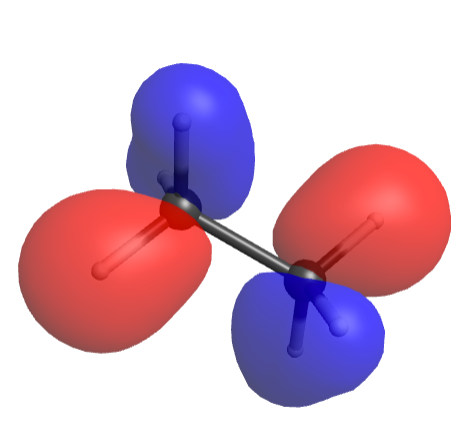WebMO in Education
Collections of Computational Activities

- The Computational Chemistry for Chemistry Educators website provides lectures and labs on basic computational chemistry concepts with instructions for WebMO.
- The Molecular Computation and Visualization in Undergraduate Education (MoleCVUE) website has tested computational chemistry in the classroom activities, a bibiolgraphy of computational activities ,and computational resources targeted at the undergraduate level.
- The Virtual Inorganic Pedagogical Electronic Resource (VIPEr) website has in-class activities and lab experiments on inorganic chemistry topics with instructions for WebMO.
- The
PSI4Education website has a list of exercises the use the PSI4 program and WebMO.
- The Molecular Sciences Software Institute (MolSSI) has an Education Resources website with tutorials for learning programming and computational molecular science.
Textbooks using WebMO
- Exploring Chemistry with Electronic Structure Methods (3rd Edition) by James Foresman and AEleen Frisch is a textbook that explains how to use the Gaussian software engine to explore molecular systems and chemical reactions. Detailed instructions for preparing input files and visualizing results with WebMO are included.
Classroom-Tested Exercises using WebMO
- Building Molecules
- Geometry Optimization
- Conformational Energy
- Periodic Trends
- Eletrophilic Aromatic Substitution
- Heat of Combustion of Fuels
- Ozone Depletion Cycles
- Anomeric Effect
Laboratory Experiments using WebMO
Lecture Notes and Assignments
The following give an example of a 1/2 semester WebMO/Gaussian-based introductory computational chemistry course.
- Syllabus
- Schedule
- Lecture 1. Computational Chemistry, WebMO, and Energy Calculations
- Assignment 1
- Lecture 2. Geometry Optimization
- Assignment 2
- Lecture 3. Frequency Calculations
- Assignment 3
- Lecture 4. Model Chemistries
- Assignment 4
- Lecture 5. Applications I: Partial Charges and Potential Energy Surface Scans
- Assignment 5
- Lecture 6. Applications II: Bond Orders, Isodesmic Reactions, IRC Scans
- Assignment 6
- Lecture 7. Applications III: Excited States, Solutions
- Assignment 7